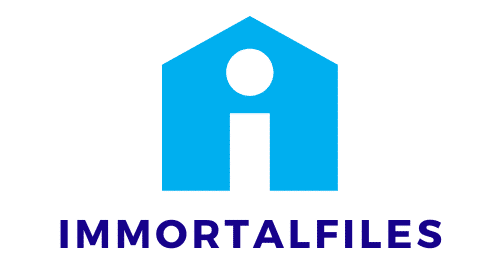How can you use smart lighting to enhance mood and energy?

Have you ever considered how your lighting could affect your mood and energy? Smart lighting could be the game-changer you’ve been looking for. Not only can it create unique moods and atmospheres, but it can also significantly boost energy levels and productivity. In this article, you’ll learn about the benefits of smart lighting and how you can leverage this innovative technology to optimize your living and working spaces.
The Benefits of Smart Lighting
Before diving into how you can use smart lighting to enhance your mood and energy, it’s essential to understand what it is and the benefits it offers.
Lire également : How can you make a cozy home office in a corner space?
Smart lighting refers to a lighting setup that can be controlled remotely, usually via a smartphone or voice-activated assistant. It enables you to adjust the color, intensity, and schedule of your lights easily. Whether you want to create a tranquil atmosphere for bedtime or a vibrant setting for a party, smart lighting lets you do it with a simple click or command.
Several key benefits come with installing a smart lighting system in your home or office. Among these is energy efficiency. Most smart lights use LED technology, which consumes less power than traditional incandescent and fluorescent bulbs. This feature can help you save on your electricity bills over time.
A lire aussi : How to integrate sustainable practices in everyday living?
Another significant advantage is the level of control that smart lighting systems provide. With traditional lighting, you’re limited to switches on the wall. With smart lighting, you can control your lights remotely, set schedules, and even automate them to respond to different triggers, like the time of day or your arrival home.
Mood Enhancement with Smart Lighting
Having control over your lighting can significantly impact your mood. By experimenting with different colors and intensities, you can create an atmosphere that caters to your emotional state.
For instance, a study by the Lighting Research Center found that exposure to blue light in the morning can help individuals feel more alert and awake. By setting your smart lights to emit a cool, blue hue in the morning, you can help set a positive and energetic tone for your day.
In contrast, warm, yellow light has been found to promote relaxation and sleep. So, as you wind down in the evening, consider setting your lights to a warm, dim setting to help prepare your body for rest. This kind of control over your lighting can help you manage your mood effectively throughout the day.
Boosting Energy and Productivity with Smart Lighting
Smart lighting doesn’t just impact your mood—it can also play a crucial role in boosting your energy levels and productivity. Exposure to natural light has been found to increase alertness and performance. However, not everyone has the luxury of working in a space with abundant natural light.
The good news is, smart lighting can help simulate the effects of natural light. By setting your lights to emit a bright, white light, you can mimic the look and feel of natural daylight. This kind of light can help reduce fatigue, improve mood, and boost productivity.
Furthermore, smart lighting systems can be programmed to shift the color and intensity of light throughout the day, mimicking the natural progression of daylight. This can help regulate your body’s internal clock, leading to better sleep, improved mood, and more energy during waking hours.
Easy Control with Smart Lighting Systems
One of the main reasons why smart lighting is becoming increasingly popular is the ease of control. With a few taps on your smartphone or a simple voice command, you can manipulate the lighting in your space.
Most smart lighting systems are compatible with popular smart home ecosystems like Amazon Alexa, Google Home, and Apple HomeKit. This compatibility allows you to integrate your lighting control with other smart home devices. For instance, you can set up routines where your lights dim when you start watching a movie on your smart TV or turn off automatically when you leave the house.
Moreover, these systems often come with user-friendly apps that let you control your lights from anywhere. Whether you’re in bed and forgot to turn off the kitchen lights or on vacation and want to make it appear as if someone’s home, smart lighting gives you the control you need.
Smart Lighting: A Revolution in Lighting
In conclusion, smart lighting is more than just a convenience—it’s a tool that can significantly enhance your mood, energy levels, and productivity. By giving you control over the color and intensity of your lights, it allows you to create an atmosphere that suits your needs at any given moment. Whether it’s mimicking natural daylight to boost your energy during work hours or creating a warm, relaxing atmosphere in the evening, the possibilities are endless. The revolution in lighting has arrived, and it’s smarter than ever.
Intelligent Sleep Patterns with Smart Lighting
Getting a good night’s sleep can greatly affect your overall health, mood, and energy levels. However, in our modern world filled with screens and artificial light, our natural sleep patterns (or circadian rhythms) can easily be disrupted. This is where smart lighting can provide a solution.
Philips Hue, along with other smart lighting systems, can be programmed to support your body’s circadian rhythm. As the day progresses, the color temperature of the LED lights can be altered; shifting from cool, stimulating light in the morning to warm, comforting light in the evening. This natural progression of light helps signal to your body when it’s time to wake up and when it’s time to wind down for sleep.
In addition, smart lighting can help you to wake up naturally in the morning. Instead of an abrupt alarm, your light bulbs can be set to gradually increase in brightness, mimicking the sunrise and gently stimulating your senses. Research has shown that waking in this manner can lead to a more positive mood and increased energy levels throughout the day.
Moreover, if you’re struggling with sleep, you can set your smart lights to emit a soft, warm light in the evening, which has been found to enhance the production of the sleep hormone, melatonin. This use of smart lighting to manipulate sleep patterns is not just efficient but also a natural way to improve your sleep health.
Protection from Eye Strain and Enhancing Energy Efficiency
Smart lighting technology is not only beneficial for mood and sleep regulation, but it also contributes to eye health and energy conservation. Traditional bulbs often emit a harsh light that can contribute to eye strain, especially when used for extended periods. Smart bulbs, on the other hand, can be adjusted to a suitable intensity and color temperature that minimizes discomfort and reduces the risk of eye strain.
Moreover, smart lights are typically LED lights, which are significantly more energy-efficient than traditional incandescent bulbs. According to the U.S. Department of Energy, LED lighting uses at least 75% less energy and lasts 25 times longer than incandescent lighting. By switching to smart lighting, you’re not only enhancing your mood and energy levels but also making an environmentally friendly choice that can save you money in the long run.
Furthermore, smart lighting offers advantages in terms of energy efficiency beyond just the LED technology. The ability to control your lights remotely means that you’ll never have to worry about leaving lights on and wasting energy. You can even schedule your lights to switch off automatically when you’re not home, contributing to additional energy savings.
Conclusion: Embracing the Smart Lighting Revolution
To sum up, smart lighting is a powerful tool that can revolutionize the way you experience your living and work spaces. It provides numerous benefits, from mood enhancement and energy boosting to improving sleep patterns and protecting your eyes from strain. On top of that, it’s a more energy-efficient choice, helping you to reduce your carbon footprint and save on electricity bills.
While the upfront cost of smart lighting may be higher than traditional lighting, the long-term savings and numerous benefits make it a smart investment. By embracing the smart lighting revolution, you can transform your environment, and in turn, your mood, energy levels, and overall well-being. The future of lighting is here, and it’s bright, energy-efficient, and smart.
